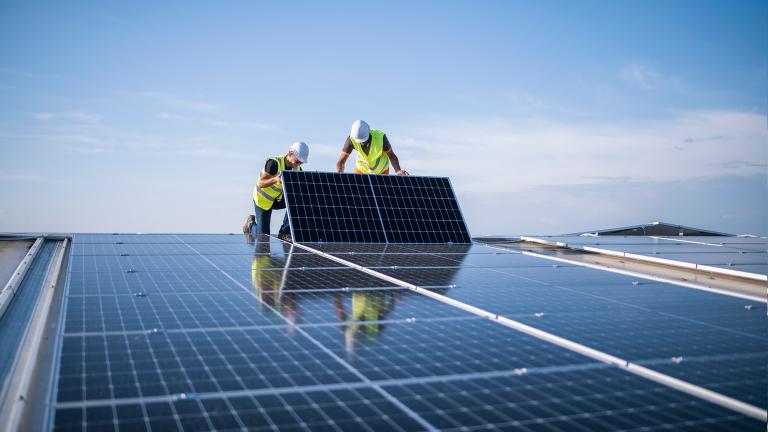My recent blog post — Jack Bauer becomes first-ever carbon-neutral torturer as Murdoch says “Climate change poses clear, catastrophic threats” — led one reader to email me that Gitmo has wind turbines. I googled, and indeed they do.
What is doubly interesting is that this project is the direct result of the Federal Energy Management Program, part of DOE’s office of Energy Efficiency and Renewable Energy that I helped run in the mid-1990s. Since the Gingrich Congress blocked all efforts to ramp up funding for this “no brainer” program that helps reduce the deficit — by lowering the energy bill of federal agencies — while saving energy and reducing pollution, we launched a huge effort to leverage private money to pay for the retrofits.
That effort had a classic bureaucratic name — Indefinite delivery/indefinite quantity Super Energy Savings Performance Contracts (ESPCs) — you can read about here. The ESPCs avoid the need for any upfront capital by the federal government. Even though Bush has grossly underfunded all such EERE deployment programs, the program continued and Gitmo made use of it (see here [PDF]):
The Department of the Navy partnered with NORESCO to construct a $12 million wind turbine project at Guantanamo Bay, Cuba, using an energy savings performance contract. Four wind turbines will generate 3,800 kilowatts of electricity — enough to supply about a quarter of the peak power needed for base operations. The project will not only save taxpayers $1.2 million in annual energy costs, but will also save 650,000 gallons of diesel fuel and reduce air pollution by 26 tons of SO2 and 15 tons of NOX, demonstrating the Navy’s commitment to energy conservation and environmental stewardship.
So, no, Gitmo is not carbon neutral.
The Pentagon’s news story on this back in 2005 explains how the ESPC made this possible:
The turbines were funded through an “energy performance savings contract” with Noresco, a Massachusetts company specializing in “energy solutions.” Through this contract, the Navy provided no up-front funds. Noresco funded the turbines, and the base will repay the company out of cost savings over about a 12-year period.
After that, the taxpayers keep all the savings for the life of the equipment. The story has some fascinating details on Gitmo and the turbines:
“This is the world’s most ancient philosophy, combined with state-of-the-art technology,” said Navy Cmdr. Jeffrey M. Johnston, the base’s public works officer. “Harnessing the wind is arguably the first technical thing man ever did.”
At 80 meters (262 feet) high, the four three-blade turbines are among the base’s most noticeable features …
Guantanamo Bay is unique in that the base is completely self-sustaining. Most U.S. military bases in the United States and overseas get their power and water from municipal sources. But Guantanamo Bay takes no power or water from Fidel Castro’s Cuba. …
In a fortuitous coincidence, the time of day with the highest average winds is right during the base’s peak energy-usage period — about 4 p.m., Johnston said. “By fortunate happenstance, we are expecting that when our loads are largest, our wind power will also be the largest,” he said.
In addition to generating power, the turbines have significantly cut down on emissions of greenhouse gases created through burning diesel fuel. Black clouds containing carbon dioxide can routinely be seen pouring from the diesel generators supplying power to the base’s energy grid. Johnston said using the wind turbines would have the same effect as taking 2,500 cars off Guantanamo Bay’s roads for a year – that’s fairly significant for an installation with a total population of about 10,000 people.
Each turbine is anchored in “a giant, swimming pool-sized block of concrete, through which 22 soil anchors are drilled into the mountain,” Johnston said. He explained that the soil anchors are sunk 30 to 40 feet deep, then sealed with grout. “So they are essentially nailed to the mountain,” he said of the turbines.
They’re rated to withstand winds up to 140 miles per hour — equivalent to a Category 4 hurricane. “If we get to the point where those blow down, that will be the least of our worries,” Johnston said. “Because the rest of the base will probably be floating to Jamaica.”
For more on what the military is doing with green energy, see here.
This post was created for ClimateProgress.org, a project of the Center for American Progress Action Fund.


